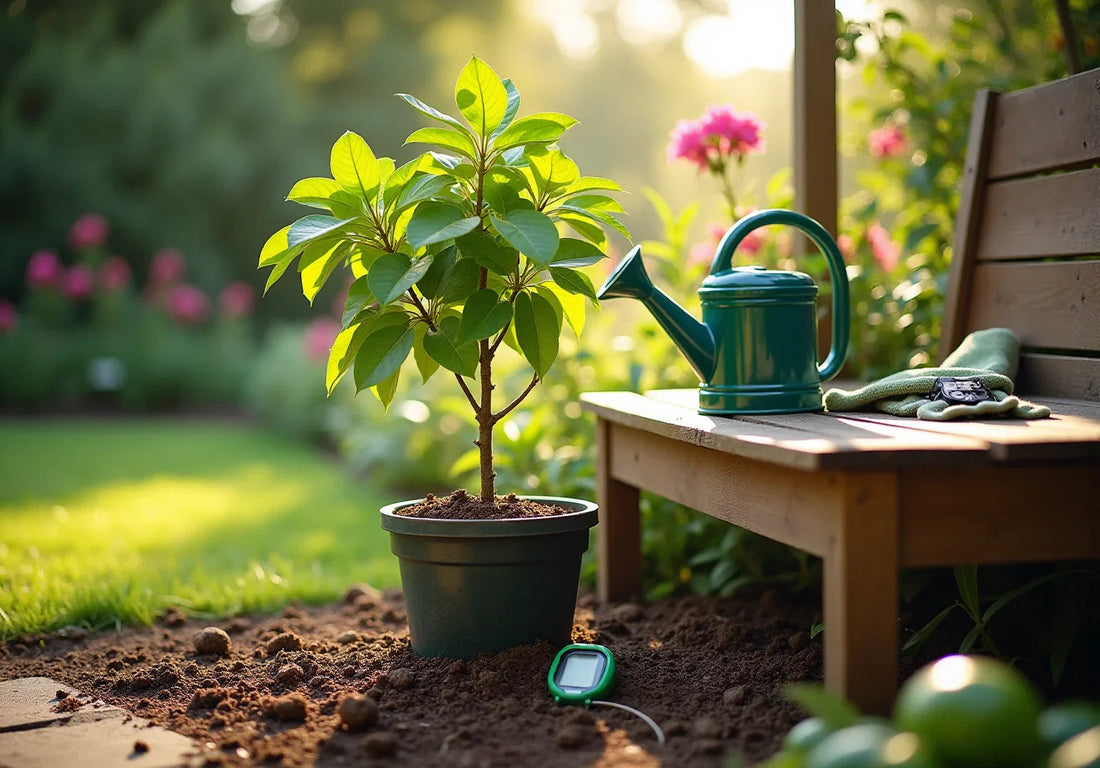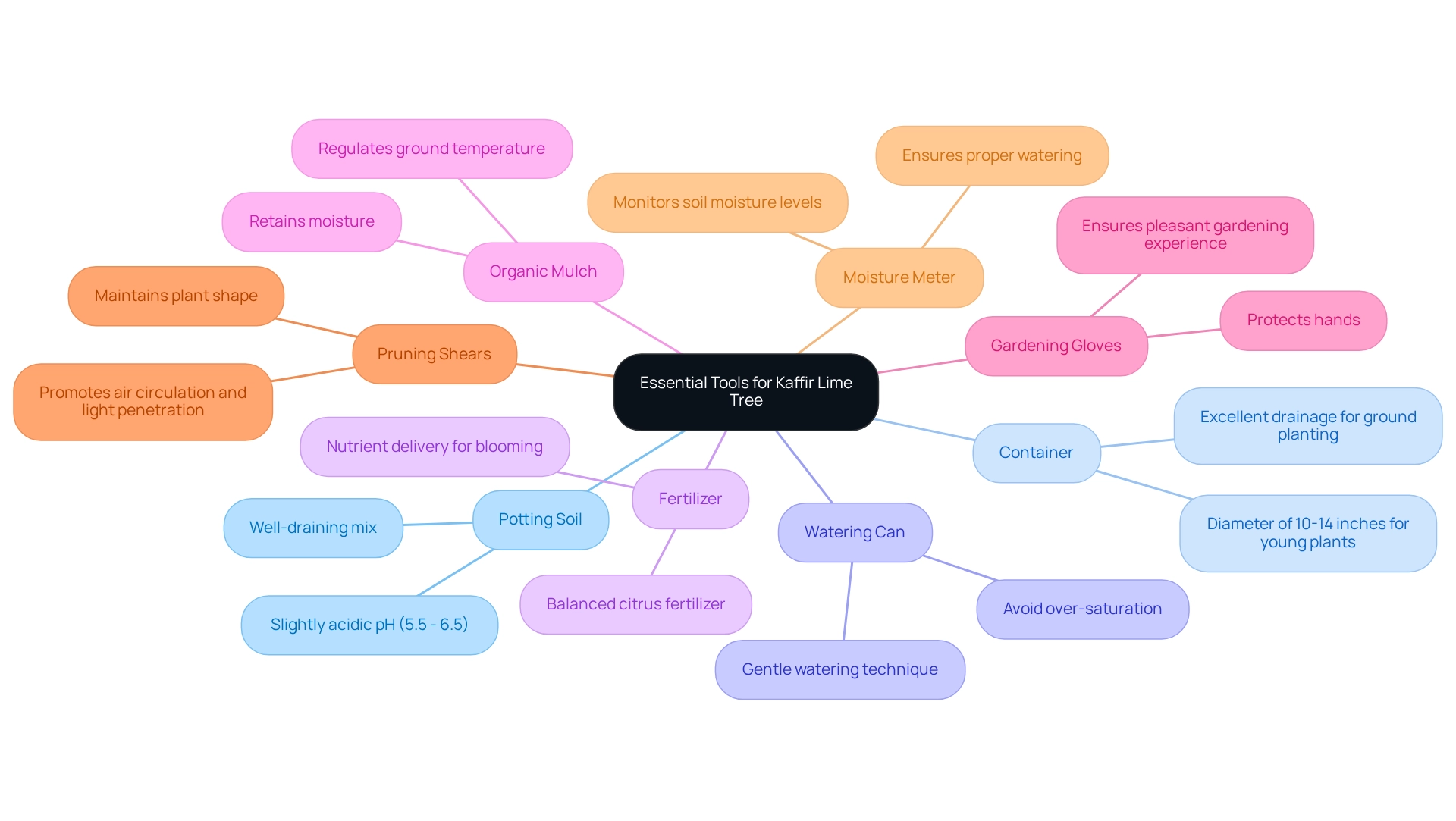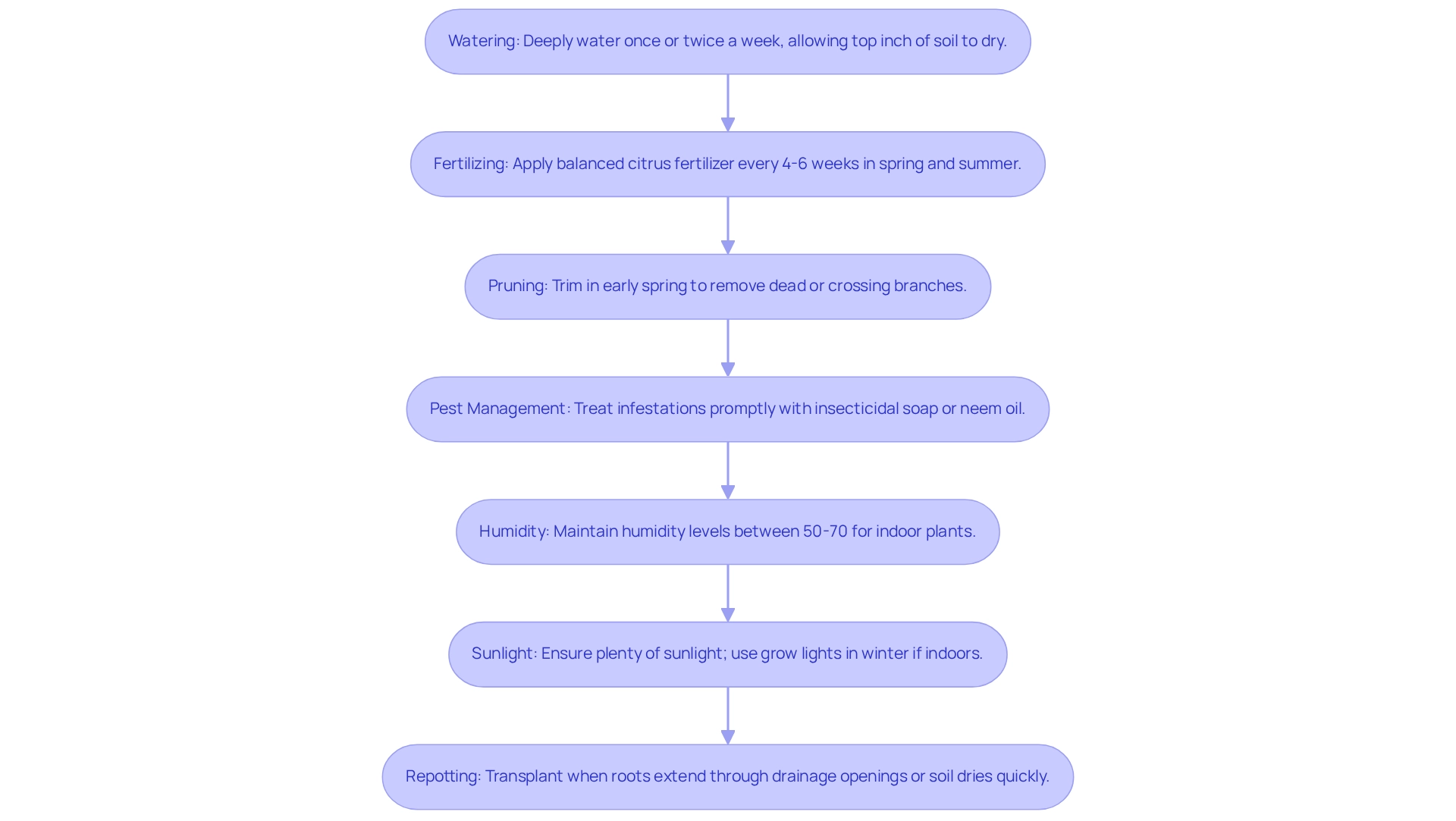
4 Steps to Successfully Grow Your Kaffir Lime Tree
Share
Ready to grow your own Kaffir lime tree at home? If you're looking to add bright, citrusy fragrance to your garden—or your cooking—Kaffir lime trees are the perfect pick. These aromatic trees are easy to care for and incredibly rewarding to grow. Whether you're new to gardening or a seasoned citrus enthusiast, this step-by-step guide will walk you through how to grow a healthy, thriving Kaffir lime tree.
👉 Shop Organic Kaffir Lime Tree
🌿 Or explore our full Citrus Trees Collection to grow your tropical orchard at home.
At Everglades Farm, we ship healthy, grafted citrus trees grown in Florida with care. Need help along the way? Our expert team is just a message away. Learn more About Everglades Farm.
- Gather the right tools and materials
- Plant it with care
- Maintain it diligently
- Address any common challenges that may arise
1. Gather Essential Tools and Materials
- Container or Planting Site: If you opt for a pot, select one with a diameter of at least 10-14 inches for young plants. For ground planting, make sure the site has excellent drainage to prevent root rot, which can be a common concern.
- Watering Can or Hose: Use a gentle watering technique to avoid over-saturating the ground, which can harm the roots. Remember, moderation is key!
- Fertilizer: A balanced citrus fertilizer is vital for delivering the necessary nutrients, especially since Meyer lemon plants typically do not bloom until their third or fourth year.
- Organic Mulch: This helps retain moisture and regulates ground temperature, creating a stable environment for your plant.
- Gardening Gloves: Protect your hands while working with earth and plants, ensuring a pleasant gardening experience.
- Pruning Shears: These are essential for maintaining your plant’s shape and health as it matures, promoting better air circulation and light penetration.
- Moisture Meter: While optional, a moisture meter can be a helpful tool for monitoring soil moisture levels, ensuring your plant receives just the right amount of water.
🌿 Bonus Tip: Cooler temps around 60°F in winter/spring help trigger blooming. For additional citrus growing tips, check out Florida Citrus Trees for Sale: Essential Tips for Success.

2. Plant the Kaffir Lime Tree
- Choose the Right Location: Begin by selecting a spot that basks in at least 6-8 hours of direct sunlight daily, as citrus plants truly thrive in bright conditions. If you’re planting indoors, position your plant near a sunny window to guarantee it receives the light it craves. Remember, extreme cold can be detrimental; for example, a chilling 16.5 °F event during Christmas 2022 devastated all Meyer plants in an experiment. This highlights the importance of protecting your tree from low temperatures.
- Prepare the Ground: When planting in the ground, loosen the soil and mix in compost to boost fertility and drainage. If you’re using a pot, choose a well-draining potting mix to foster healthy root development. Regularly testing the soil can help you identify any micronutrient deficiencies, which are crucial for the vitality and productivity of your kaffir lime tree.
- Dig the Hole: Create a hole that is twice as wide and just as deep as the root ball of your plant. This allows the roots to spread freely and establishes a solid foundation for growth.
- Position the Tree: Gently place the tree in the hole, ensuring that the top of the root ball is level with the surrounding soil. Avoid burying the trunk, as this can lead to rot and impede growth.
- Backfill the Hole: Fill the hole with soil, packing it down gently to remove air pockets. Water the area thoroughly to help compact the ground and provide moisture to the roots.
- Mulch: Apply a layer of organic material around the base of the plant, keeping it a few inches away from the trunk to prevent rot while retaining soil moisture.

3. Maintain Your Kaffir Lime Tree
- Watering: Deeply water your plant once or twice a week during the growing season, allowing the top inch of soil to dry out between waterings. Remember to adjust the frequency based on weather conditions to prevent overwatering, as we want to ensure your plant feels comfortable and supported.
- Fertilizing: Apply a balanced citrus fertilizer every 4-6 weeks during the spring and summer. As the seasons change, gently decrease feeding in the autumn and winter to align with your plant's natural growth cycle, showing it the care it deserves.
- Pruning: Trim your plant in early spring to remove any dead or crossing branches. This simple act encourages bushier growth of the kaffir lime tree and enhances air circulation, which promotes overall health and vitality.
- Pest Management: Keep a watchful eye for pests like aphids and scale. If you notice any infestations, treat them promptly with insecticidal soap or neem oil to protect your beloved tree.
- Humidity: For those growing indoors, aim to maintain humidity levels between 50-70%. Misting the leaves or using a humidity tray can help create a nurturing environment for growth, making your plant feel right at home.
- Sunlight: Ensure your plant receives plenty of sunlight. If you’re growing it indoors, consider using grow lights during the shorter winter days to support healthy development and keep your plant thriving.
- Repotting: Transplant your citrus plant when roots extend through drainage openings or when the soil dries rapidly after watering. This ensures your kaffir lime tree has enough room to grow and flourish, allowing it to reach its full potential.

4. Troubleshoot Common Growing Problems
-
Yellowing Leaves: If you notice yellowing leaves, it often signals nutrient deficiencies, particularly nitrogen or magnesium. To address this, check your soil moisture levels and consider applying a balanced fertilizer like potassium chloride, which has a nutrient content of 300 kg/1000 L at 20°C. Regular leaf analysis can help you monitor nutrient status and prevent deficiencies. As M. Ibrahim notes, the age of leaves taken from bearing and non-bearing branches is crucial in identifying nutrient deficiencies.
-
Leaf Drop: Experiencing leaf drop? This may occur due to environmental stress, such as sudden temperature fluctuations or inconsistent watering. Studies suggest that leaf drop rates in citrus plants can be significant under stress. Maintaining a stable environment and a consistent watering schedule is vital for minimizing stress on your plant.
-
Pest infestations from aphids and scale insects can be pesky intruders that negatively affect your kaffir lime tree. Regular inspections are essential for early detection. If you find pests, treat your plant with insecticidal soap or neem oil to manage the infestation effectively.
-
Root Rot: Overwatering or poor drainage can lead to root rot, a serious condition for any plant. Ensure your pots have adequate drainage holes and allow the soil to dry out between waterings to promote healthy root systems.
-
Poor Growth: If your citrus plant shows limited growth, it might be time to evaluate its sunlight exposure and nutrient supply. Adjust its location to ensure it receives sufficient light and modify your feeding schedule to enhance growth. Following recommended fertigation practices, such as timing nutrient applications during irrigation, can lead to better nutrient management and healthier crops.
- Fungal Diseases: The presence of mold or mildew can indicate poor air circulation or excessive moisture. To combat this, enhance airflow around your plant and avoid overhead watering, which can worsen fungal issues. By proactively addressing these common challenges and integrating insights from leaf analysis and fertigation practices, you can foster a thriving kaffir lime tree. Remember, your dedication to understanding and nurturing your plants will ensure their health and vitality for years to come. Together, we can create a flourishing garden that brings joy and satisfaction.

Conclusion
🌿 Grow Your Own Kaffir Lime Tree Today
Bringing the bright zest of Thai cooking and tropical beauty into your backyard has never been easier. With the right tools, sunlight, and a little care, your Kaffir lime tree can thrive.
👉 Order Organic Kaffir Lime Tree (Grafted)
👉 Prefer a smaller start? Try the Organic Kaffir Lime Tree Cutting
Find more citrus favorites in our Citrus Trees Collection, or visit Everglades Farm to explore more varieties.



